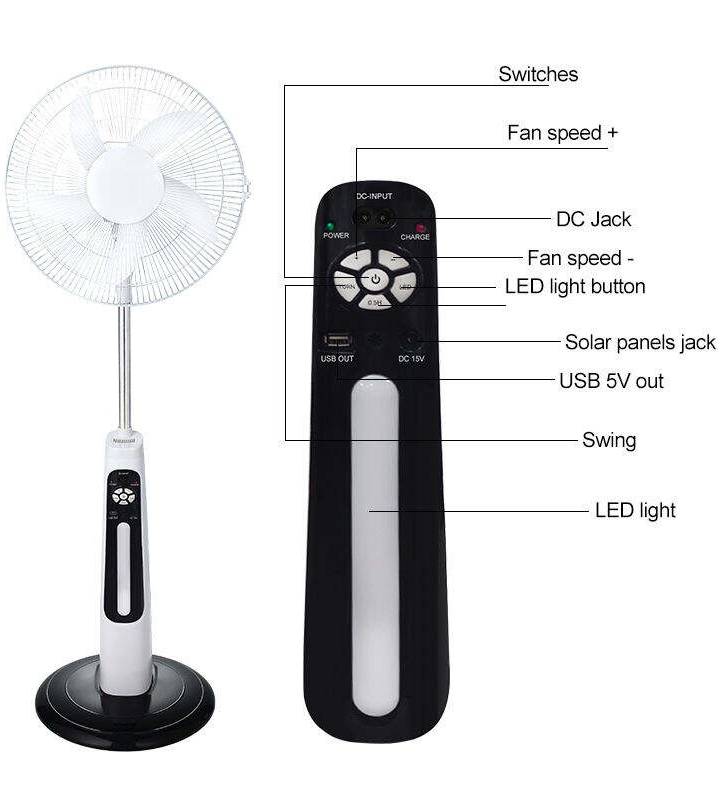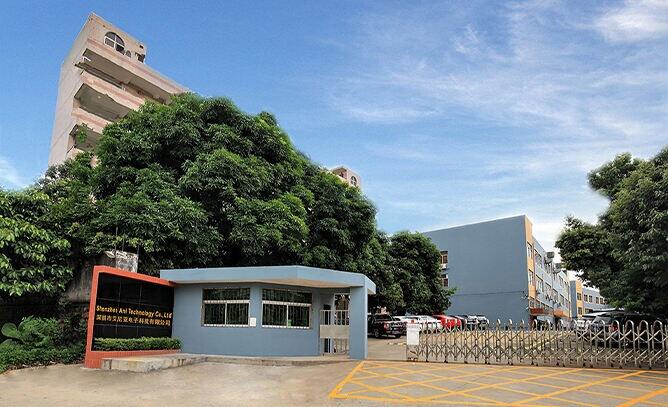
Fansên panelên rojê yên Ani Technology'ê tevlihevkirina teknolojiya pêşketî û enerjiyê ya nûjen e. Ev fan hêza rojê bikar tînin ku tecrubeya sarkirina bi bandor peyda bikin. Panelên rojê yên bi bandorê bilind bataryaya fanê şarj dikin, ku hûn dikarin di odeyekê de di rojên herî germ de jî sar bimînin. Dîzaynkirina wê ya bişkoka jî wê bi hêsanî bicih û bikaranîna di hundir an derve de dema ku tu pir hewce ye. Bi hêza rojê bi fanên panêlên rojê yên Ani Technology ve bişopînin û niha ji feydeyên sar ên sar bi kêfxweş bin.

Bi Ani Technology's Solar Panel Fan, dergehê xwe yê sarkirina bi hişmendî ya ekolojîk re bi rehetiyeke domdar re bi kêfxweşî bixwin. Bi teknolojiya pêşeng a enerjiya rojê çêkirî, fanê me bê deng û bi awayekî bi awayekî bi awayekî bi awayekî; ew bi awayekî berdewam bêyî ku çavkaniyên enerjiyê yên kevneşopî bigire, radixe. Çiqasî ku hûn li daristanê, li daristanê, an jî di dema bêdengiyê de dijîn, panera me ya solar garantî dike ku hûn dê sar û bêdeng bimînin û di heman demê de çepkirina çepgirê xwe ya jîngehê kêm bikin. Bi ANI Technology's Solar Panel Fan re rûnin û xwe bişon.

Bila germî roja te xera neke. Fênera panelên rojê, ji Ani Technology, ji bo wan kesan hatiye çêkirin ku dixwazin her çi dibe bila bibe sar bimînin. Ew bi awayekî hilgirtî û domdar e: bi enerjiya rojê hatiye çêkirin. Ev fan bi bikaranîna rojê ji bo ku hûn hewayeke nûjen bikin, li her derê ku hûn in. Bi vê amûrê, hûn neçar in ji bo girêdayî ji bo outlet, an jî bi destxistina elektrîkê li hemû bit. Bi van fanên panelên rojê yên ji Ani Technology re bi awayekî azad û rehet kêfxweşî li ser çûn û hatina xwe bikin.

Fanê me yê panelên rojê we vexwend ku hûn rûnin, xweş bikin û kêfxweş bibin. Ev ji bo kesên wek te ye ku naxwazin kabloyan yan jî hewce ne ku dema ku bikar tînin, ji bo dergehekê bigerin. Tenê fanê panelê rojê li rojê bixe û bihêle ku bixebite. Fan Panel Solar me dê te bi hewa sar de greening çalakiyên xwe yên derve li ser patio xwe, baxçe an her cihê ku adventure te derve digire.

Bi hêza sarkirina herî baş a ku heye rû bi rû bin. Fênalê panelê solar ji Ani Technology ewqas piralî û karîger e ku ew bi awayekî hewayî dikare bêyî ku tu çavkaniyên hêza kevneşopî biparêze. Ji bo çalakiyên derve, çûn û hatina kampê an rewşên awarte, divê bi awayekî bêhempa be, ji ber ku her dem, tu li her derê ku diçî, dixwazî sar û xweş bimînî. Di karê xwe de bi hêza rojê û sêwirana patentkirî çareseriyeke sar û pêbawer a sarkirina her derê cîhanê ji bo ku hûn li wir in. Dema ku hûn ji bo Ani Technology's Solar Panel Fan hilbijêrin, hêsaniyeke bêhempa bibînin.

Şîrketa me li bajarê afirînerîyê Shenzhenê ye û xwedî ji 20 salan zêdetir tecrubeya pîşesaziyê - Ne. Koma me 15000 metre çargoşe û nêzîkî 300 karmendên, di nav de ji 10'ê zêdetir endezyarên R&D , nêzîkî 20 karmendên tîma firotanê û kapasîteya hilberînê ya ji 10000 yekîneyên zêdetir di rojê de - Ne. Komela me şaxê xwe yê avakirina û bi gelek avakirina fanên taybet heye. Em niha bi hinek ji 500 şîrketên herî mezin ên cîhanê re, wek Engie û Philips re hevkarî dikin. Koma me ISO9001 û belgeyên hilberê yên wekî CE, ROHS hwd.
Li Ani Technology, profesyonelî di navenda her tiştê ku em dikin de ye. Bi salan tecrûbeya di pîşesaziyê de, tîma me ya pispor ji bo pêşkêşkirina hilber û xizmetên top-noted ve girêdayî ye. Ji sêwirandinê heta çêkirinê, em pîvanên herî bilind ên profesyonelî diparêzin da ku kêfxweşiya mişterî misoger bikin.
Yek ji avantajên me yên sereke, hêza me ye ku em berhemên xwe ji bo pêdiviyên taybetî yên we bişopînin. Çi hûn hewceyî dîzayneke yekane an taybetmendiyên taybetî ne, tîma me bi erka pêşkêşkirina çareseriyên takekesî ye. Bi Ani Technology re, hûn dikarin berhemên ku ji bo hewcedariyên we bi temamî tên çêkirin, bi hêvî bikin.
Em bi çavkaniyên xwe serbilind in û tenê pêkhateyên herî kalîte di berhemên xwe de têkildar dikin. Ji panelên rojê heta motorên fanê, her parçey bi baldarî tên bijartin da ku domdarî, pêbawerî û performansa xwe misoger bikin. Bi Ani Technology re, hûn dikarin bawer bikin ku hûn berhemên ku ji bo domandinê çêkirî werdigirin.
Li Ani Technology, em ji bilî û ji bilî vê, ji bo xizmeta mişterî ya bêhempa diçin. Xizmetên me yên butlerê piştrast dikin ku pêdiviyên we di her gavê de, ji lêpirsîna hilberê heta piştgiriya piştî firotanê pêk tên. Bi alîkariya taybet û balkêşiya kesane, em hewl didin ku tecrûbeya we bi me re bi awayekî bêdeng û xweş bikin.
Erê, fanên me yên panelên rojê bi panelên rojê yên bi bandor ên bilind hatine çêkirin ku enerjiyê ji bo hêzê bikar bînin.
Taybetiya şarjkirina rojê dihêle ku fan ji ber ronahiya rojê bêne xwarin, çareseriyên sarkirina jîngehê û portabel peyda dikin.
Erê, fanên me yên panelên rojê dikarin di hundir û derve de bên bikaranîn, ku ji bo hilweşandina gelek şêwazên sar peyda dikin.
Bêguman, fanên me yên panelên rojê ji bo kampkirin û çalakiyên derve îdeal in, bêyî ku girêdayî çavkaniyên hêza kevneşopî bibin, rehetiya sarkirina peyda dikin.
Erê, fanên me yên panelên rojê pir caran bi pilên nûvekirî yên ji bo bikaranîna berdewam tên, heta dema ku ronahiya rojê nehatiye.
